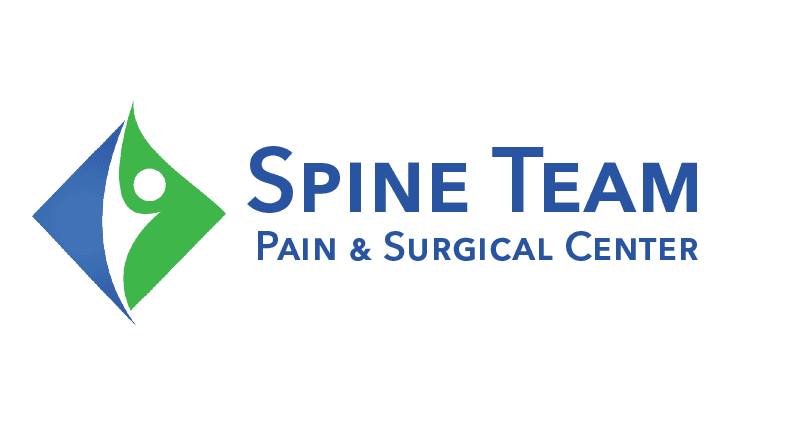How Do Trigger Point Injections Work
The human body is highly complicated and interconnected, with every part of the body linked to others in a certain way. This is amply demonstrated when a problem occurs in one location and your nerves cause signs (in this case, pain) to emit it outward.
When this occurs and goes beyond a tolerance level, trigger point injections go right to the point of origin of your pain to provide relief.
For many patients, trigger point injection (TPI) is a viable option for pain relief. TPI is a method of treating painful muscle areas that have trigger points, or knots that form when muscle tissue does not relax. Such knots can frequently be felt beneath the skin.
Trigger points can aggravate the nerves surrounding them, resulting in something called referred pain or pain felt in a different part of the body. We can reduce pain and inflammation with trigger point injections, giving the human body more time to do what it does best: fix and reconstruct.
Behind the muscle pain

When your body encounters a problem, whether internally or externally, one of the first responses is muscle constriction. This action is part of your body's flight-or-fight reaction, and it is intended to assist you in difficult conditions. However, if the contraction in your muscles does not go away, you will be left with severe pain.
These knots in your muscle fibers, also known as "knots," can form for a variety of reasons, ranging from degenerative joint problems to stress. As a result, these knots can aggravate your nerves and limit your natural body resources from flowing freely. Thus, creating a block.
These knots eventually send you into a loop of pain that lasts until the pressure is removed, which is the goal of trigger point treatment.
Effectiveness of Trigger Point Injections
With trigger point therapy, we use injections containing a corticosteroid, lidocaine, and saline to target the areas of strain in your muscles known as trigger points. Simultaneously, the steroid combats inflammation.
The pain relief and anti-inflammatory properties work together just to relax your muscle tissue through temporary numbness. Thus allowing the surrounding tissue, nerve fibers, and blood vessels of the injection site to function normally again. If you don't want to use an anesthetic or a corticosteroid, dry needle injections can help relieve your muscle knots.
This therapy is very impactful in pain management. It provides patients with much-needed comfort and the required time to identify the fundamental issue. The human body uses this time away from acute trauma to regrow and repair defected tissue. Thus helping in relieving the muscle tension by enhancing the fibers in the affected region, so they are less susceptible to pressure and stress.
Where Trigger Point Injections Are Effective
Trigger point injections are used to treat the chronic pain conditions just about anywhere in your body, including pain in your:
- Back
- Neck
- Shoulders
- Arms
- Legs
Chronic pain in the aforementioned areas is usually associated with:
- Inadequate posture
- Muscular strain
- Poor dynamics that cause muscle stress
- Joint problems
Trigger point injections can also be used to relieve pain caused by a variety of health conditions, including:
- Fibromyalgia
- Syndrome of myofascial pain
- Tension headaches
Myofascial trigger point injections have also proven to be very effective in relieving headaches and fibromyalgia symptoms.
Most patients combine myofascial trigger point injections with other treatment options such as physical therapy, pain medications, and acupressure to address pain from all angles.
What Takes Place During a Trigger Point Injection?
A medical professional inserts a small needle into the patient's trigger point during the TPI procedure. Pain management specialists use a local anesthetic or saline in the injection. They might also include a corticosteroid. The trigger point is rendered inactive by the injection, and the pain is relieved. Often, a relatively short line of therapy might provide long-term relief. Injections are usually given in a doctor's chamber and take only a few minutes. In one visit, the doctor may inject the needle at various portions of the body. If a patient is allergic to a specific drug, a dry-needle method (with no medications) is used.
When Should You Use Trigger Point Injection (TPI)?
TPI is used to treat a variety of muscle groups, most notably the legs, arms, lower back, and neck. TPI is also useful for the treatment of fibromyalgia and tension headaches. The method is also used to treat myofascial pain syndrome (chronic pain caused by the tissue surrounding the tight muscle that does not react to other treatments). Having said that, TPI's efficiency in trying to treat myofascial pain is still being investigated.
A trigger point can be found in any muscle of the body. To effectively relieve the pain, a few injections into each trigger point may be required. These treatments can be given at one to two-week intervals to most patients. In some cases, you may still not notice much improvement in the injury or symptoms until the 3rd injection.
The dangers of trigger point injections
The chances of complications from the injections are extremely low, provided the thin needle used for injection is sterilized. The most common risks of these injections are bleeding and infection at the trigger point injection site. Numbness or aches and pains at the injection site and the surrounding nerves are common effects of trigger point injections. These side effects usually go away after a few days.
Preparing for a Trigger Point Injection
A trigger point injection process for chronic pain requires no preparatory work. However, as with any diagnosis, it is critical to consult with the medical team about all prescribed medication.
Trigger Point Pain Relief
One or even more trigger points may be the source of your muscle aches or spasms. To relax the muscle, your doctor may recommend injecting the distressing areas. This can help you feel better. Relaxing the muscle can also help with movement. You may now be able to enhance and cure muscular strength.
Effects after the trigger point injections
Patients can use the treated muscle for daily activities after a trigger point injection treatment. However, they are recommended to restrict themselves from strenuous activity for a few days. The majority of patients will undergo pain medication for a day or two after the treatment. In extreme cases, the need for pain medication can last for up to a month. To obtain long pain relief, repeat injections may be required. Patients can get injections more frequently if the injections only consist of an anesthetic rather than a steroid.
Conclusion
The tender points of the body go through pain primarily due to the poor posture in individuals. The habit of not sitting straight and slouching or sleeping in an improper way can trigger pain at multiple points in the body. The pain might grow and lead to eventual nerve damage if the posture is not corrected or medication is not used to treat the chronic pain. Trigger point injections are used in treating the pain in such myofascial trigger points.

